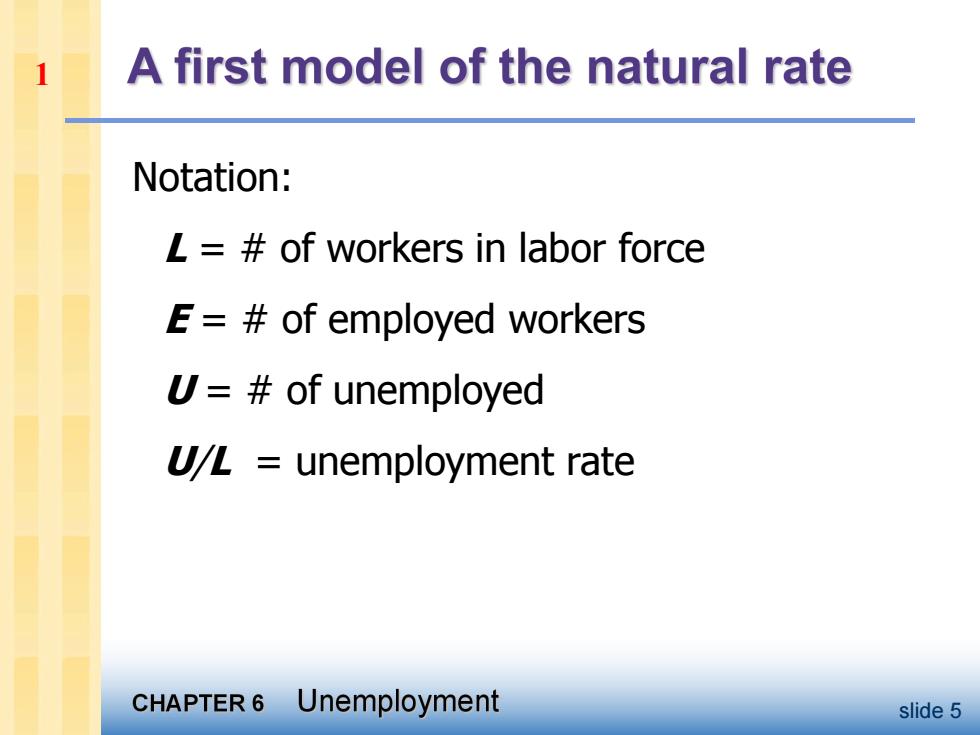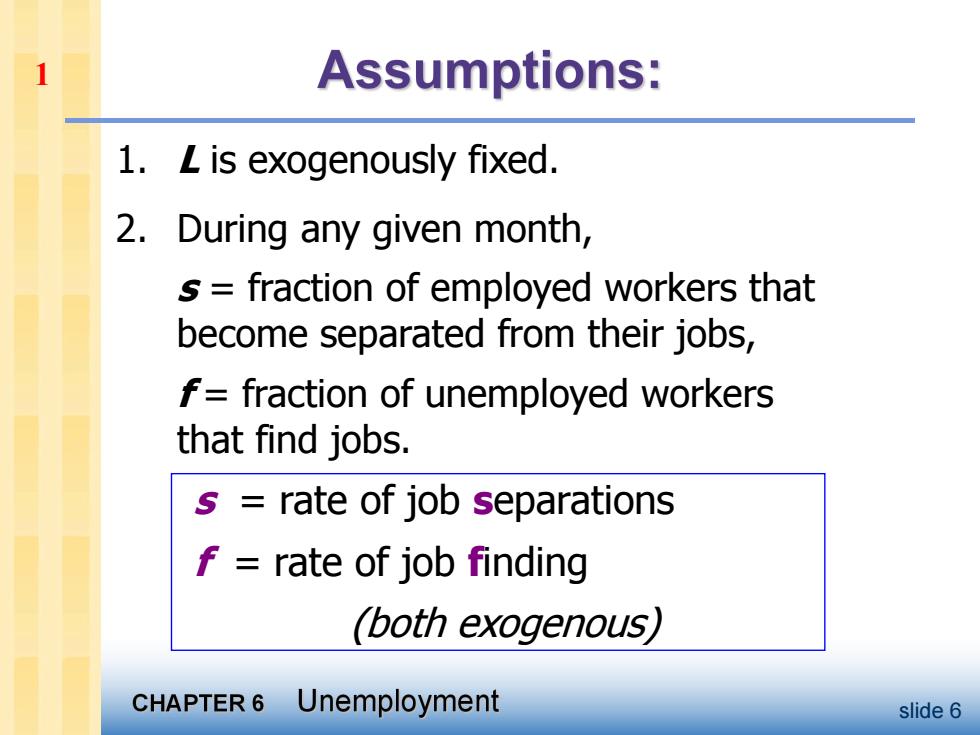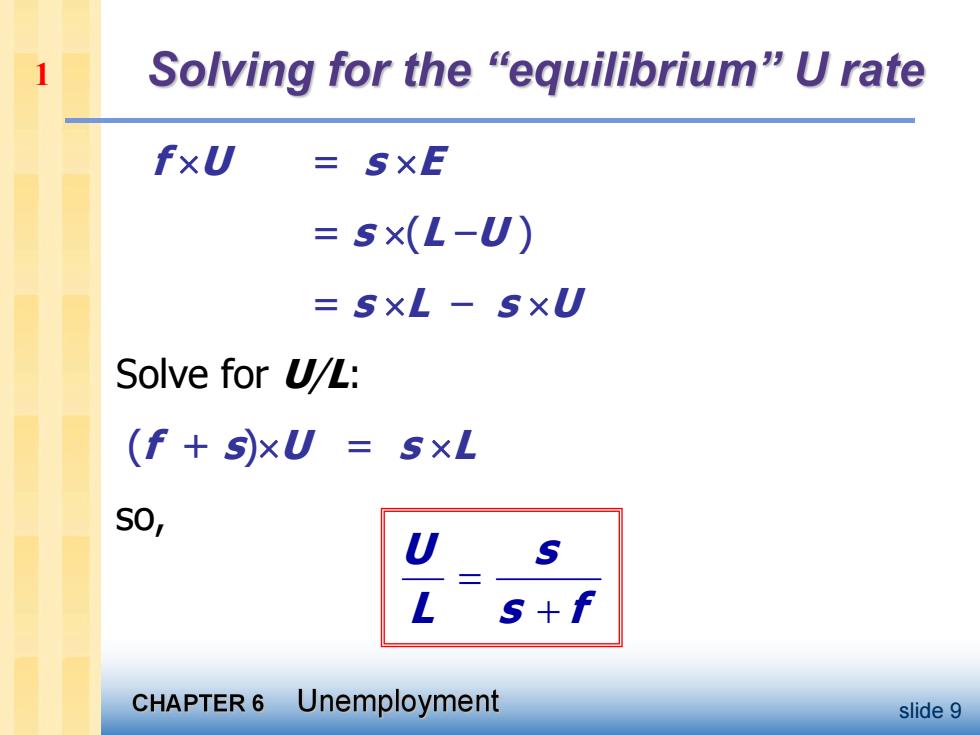
A first model of the natural rate Notation: L=#of workers in labor force E=#of employed workers U=#of unemployed UL unemployment rate CHAPTER 6 Unemployment slide 5
slide 5 Notation: L = # of workers in labor force E = # of employed workers U = # of unemployed U/L = unemployment rate 1

Assumptions: 1.L is exogenously fixed. 2.During any given month, s fraction of employed workers that become separated from their jobs, f=fraction of unemployed workers that find jobs. s rate of job separations f=rate of job finding (both exogenous) CHAPTER 6 Unemployment slide 6
slide 6 1. L is exogenously fixed. 2. During any given month, s = fraction of employed workers that become separated from their jobs, f = fraction of unemployed workers that find jobs. s = rate of job separations f = rate of job finding (both exogenous) 1

The transitions between employment and unemployment SxE Employed Unemployed fxU CHAPTER 6 Unemployment slide 7
slide 7 Employed Unemployed s E f U 1

The steady state condition ■ Definition:the labor market is in steady state,or long-run equilibrium, if the unemployment rate is constant. -The steady-state condition is: s×E=fxU of employed people who of unemployed lose or leave people who find their jobs jobs CHAPTER 6 Unemployment slide 8
slide 8 § Definition: the labor market is in steady state, or long-run equilibrium, if the unemployment rate is constant. § The steady-state condition is: s E = f U # of employed people who lose or leave their jobs # of unemployed people who find jobs 1

Solving for the“equilibrium”U rate f×U SxE =sx(L-U) SxL-SxU Solve for U/L: (f+SxU=s×L s0, U 5 L s+f CHAPTER 6 Unemployment slide 9
slide 9 f U = s E = s (L –U ) = s L – s U Solve for U/L: (f + s)U = s L so, U s L s f 1